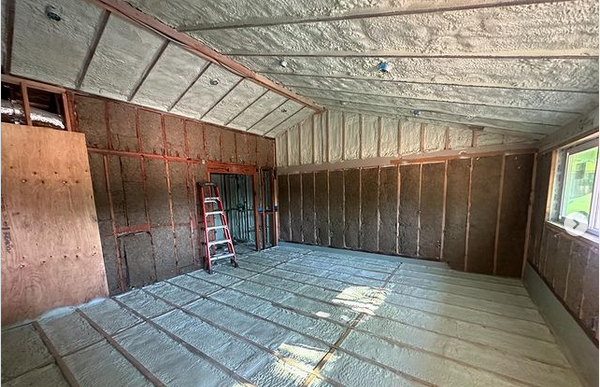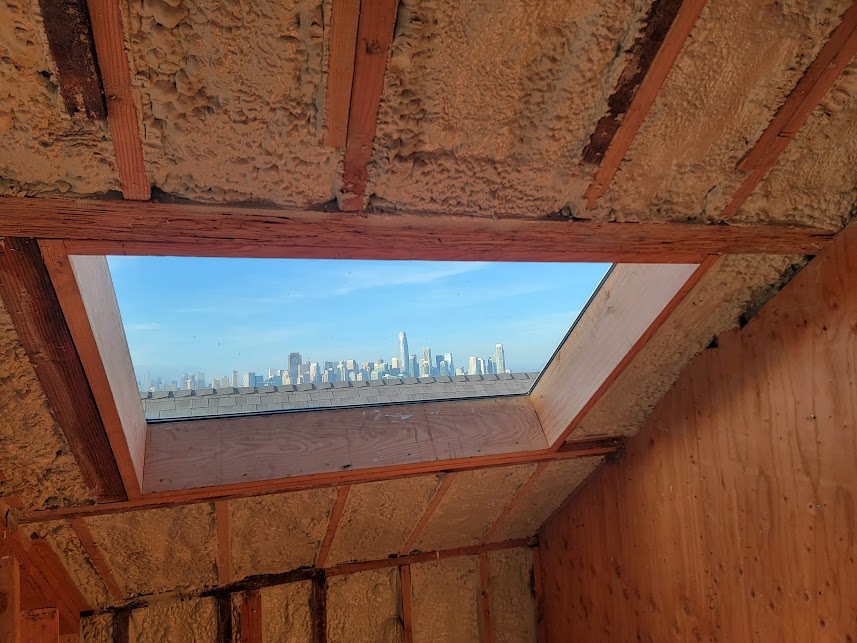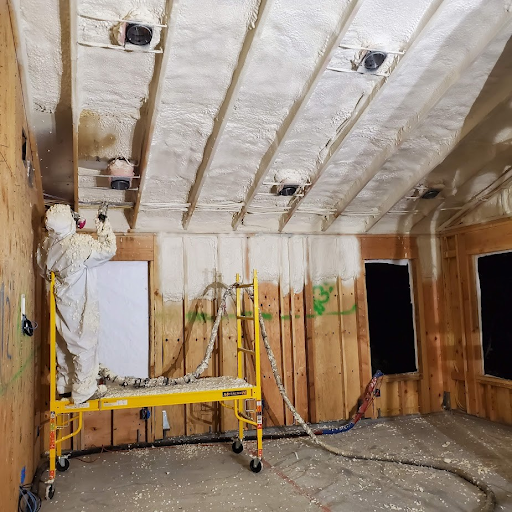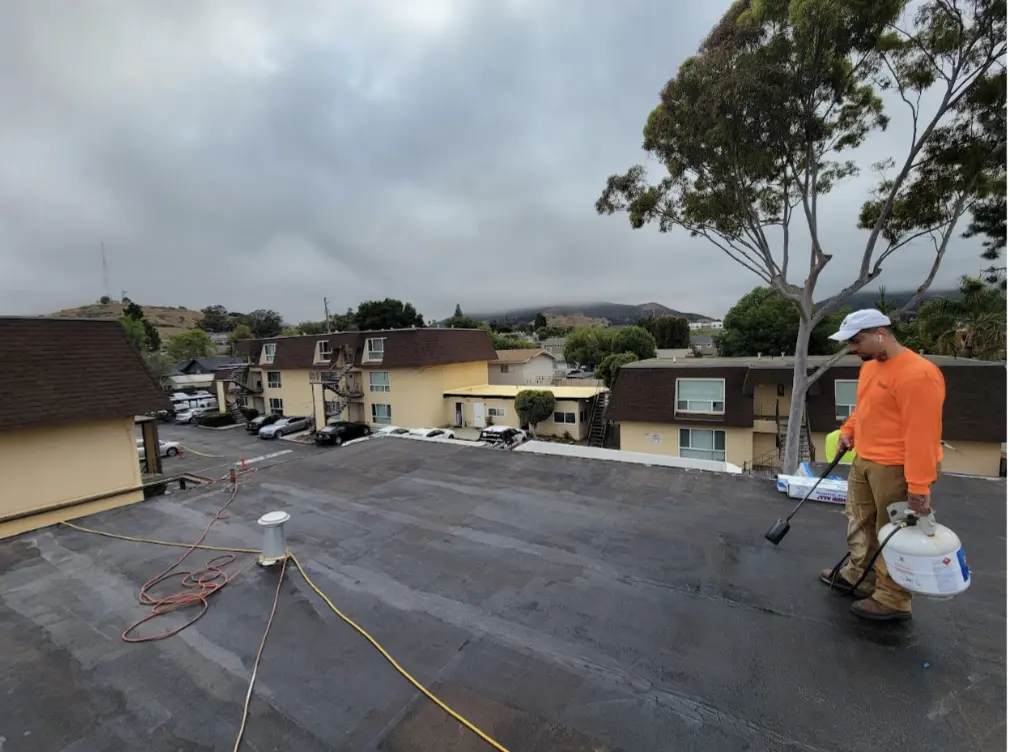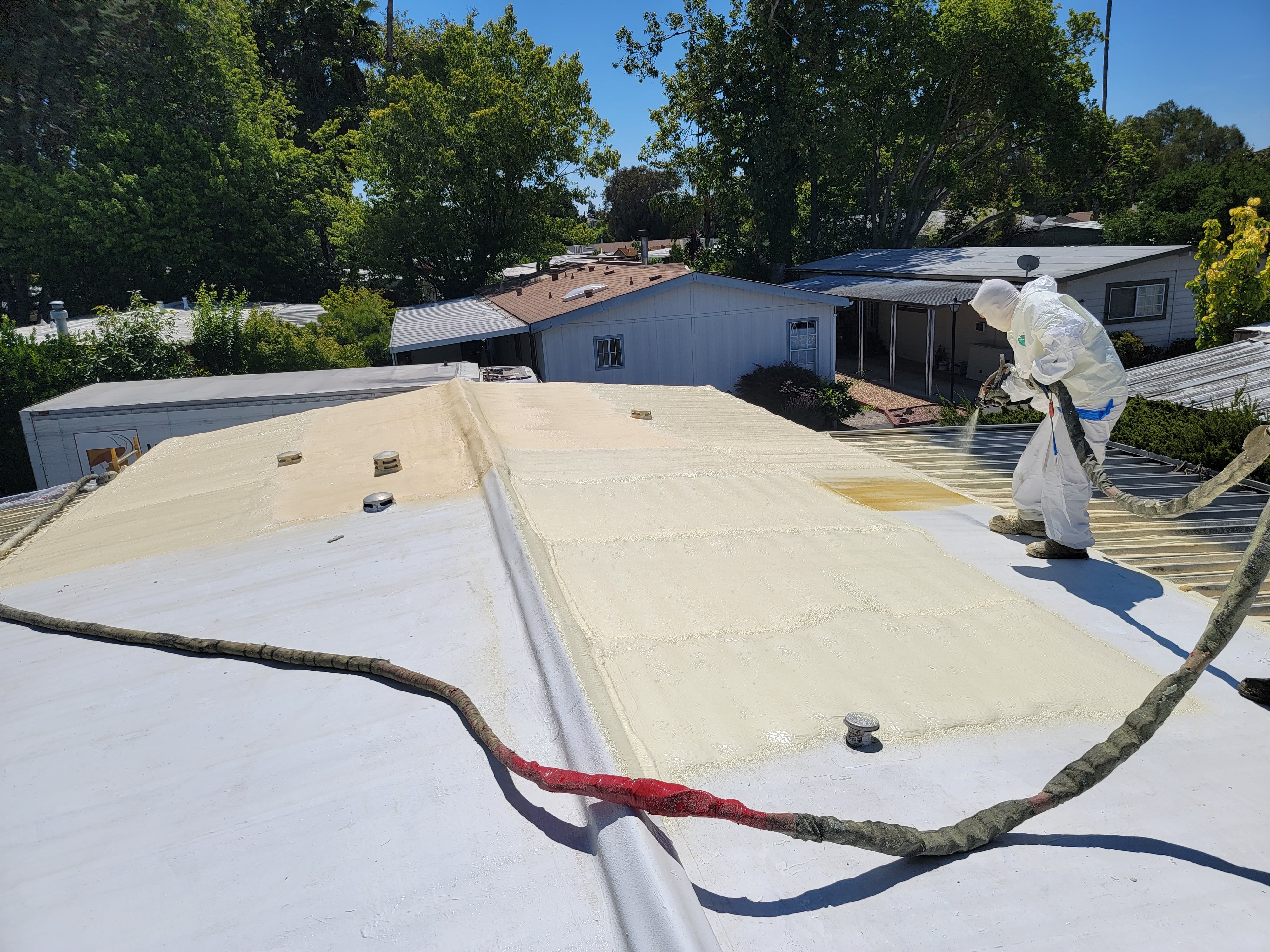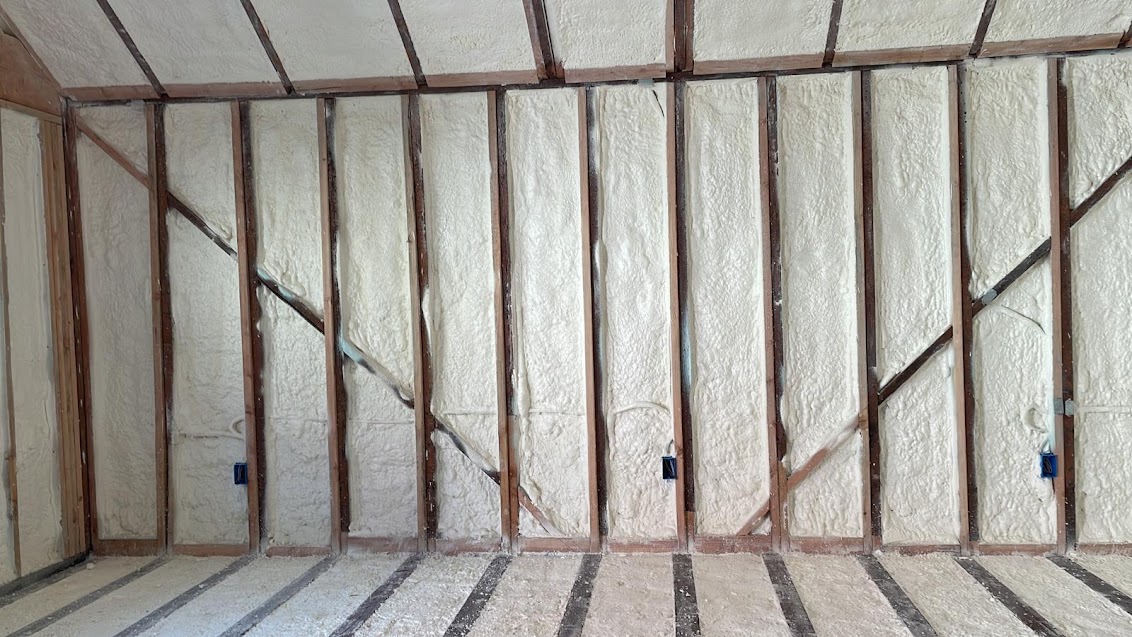California Cold Room Insulation Options: Cost, Pros & Cons
25/08/2024 9:00 AM
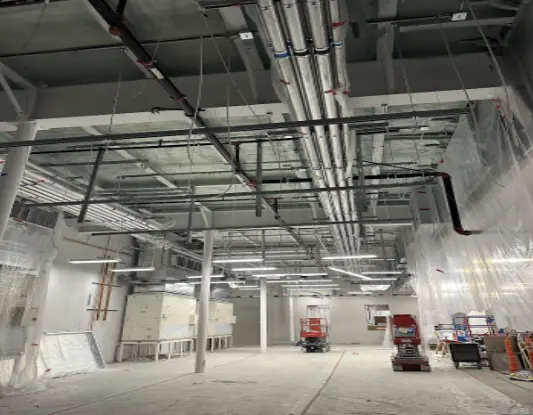
Key Takeaways
- Cold room insulation options in California include cost-effective fiberglass, spray foam for air sealing, rigid foam for high R-values, and radiant barriers for reducing heat gain - each with specific benefits.
- Spray foam insulation offers excellent air sealing but comes at a higher price.
- Rigid foam insulation is durable and provides high R-values, making it ideal for cold rooms.
- Reflective or radiant barrier insulation is best for reducing heat gain but must be combined with other insulation types in cold climates.
- USA Spray Me can help you insulate your cold room in California to improve temperature control and energy efficiency significantly.
Get Your Free Quote
Fill out the form below for instant pricing
Insulation Options for Cold Rooms in California
Why Insulation Matters for Your Cold Room
Proper insulation helps maintain the desired temperature, which is particularly important for cold rooms used for food storage or other temperature-sensitive items. It also reduces energy consumption, leading to lower electricity bills.
Temperature Control and Energy Efficiency
Insulation acts as a barrier that prevents heat transfer between the interior and exterior of your cold room. During the hot California summers, the heat from outside won't easily seep into your cold room, keeping your stored items at the right temperature.
Preventing Temperature Fluctuations
Proper insulation minimizes harmful temperature fluctuations by maintaining a stable environment - and anyone working with perishable temperature-sensitive items knows that stability is key.
Lowering Energy Bills
By reducing the amount of heat transfer, insulation decreases the workload on your cooling system - so your system doesn't have to work as hard to maintain the desired temperature, resulting in lower energy consumption and, consequently, lower energy bills.
Types of Insulation Options
Fiberglass Insulation
Fiberglass insulation is made from fine glass fibers and is available in rolls or batts. It is relatively inexpensive and easy to install, but doesn’t have the best thermal efficiency.
Spray Foam Insulation
Spray foam insulation is a versatile and highly effective option. It expands upon application, filling gaps and creating an air-tight seal. There are two types: open-cell and closed-cell spray foam (which offers the higher R-value of the two for more on that check our Pros and Cons table below).
Rigid Foam Insulation
Rigid foam insulation is available in several types:
- Expanded Polystyrene (EPS)
- Extruded Polystyrene (XPS)
- Polyisocyanurate (Polyiso)
The R-value measures the insulation's ability to resist heat flow; the higher the R-value, the better the insulation's performance. With its high R-values and durability, rigid foam insulation is available in panels and can be used in various parts of a cold room, including walls, floors, and ceilings.
Reflective or Radiant Barrier Insulation
Reflective or radiant barrier insulation reflects radiant heat away from the cold room. It is particularly effective in hot climates like California, but it usually needs to be combined with other types of insulation for optimal performance in cold rooms.
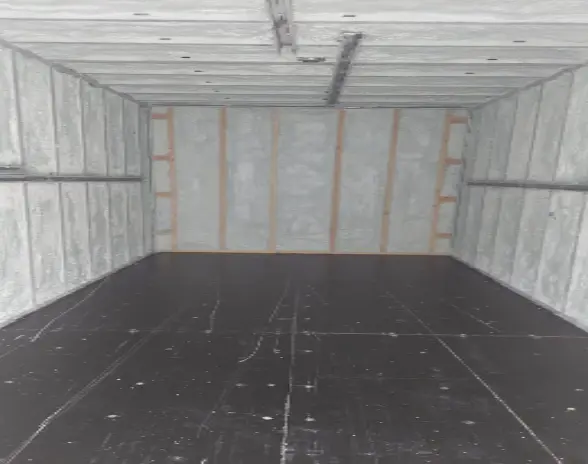
Pros and Cons of Each Insulation Type
| Insulation Type | Pros | Cons |
|---|---|---|
| Fiberglass Insulation | Non-combustible, Relatively high R-value per dollar, Cost-effective, Easy to install, Widely available | Loses effectiveness if compressed or wet, Can be irritating to the skin and lungs, Requires protective gear during installation, Does not provide an air-tight seal |
| Spray Foam Insulation | Superior air sealing, High R-value (closed-cell), Acts as moisture barrier (closed-cell), Can be applied to hard-to-reach areas | More expensive, Open-cell can absorb water, Professional installation is required |
| Rigid Foam Insulation | High R-values, Durable, Versatile use in walls, floors, and ceilings, Easy to handle and install, Reduces thermal bridging | Higher cost than fiberglass, Challenging to fit into irregular spaces, Some types are flammable and need fire-resistant covering |
| Radiant Barrier Insulation | Lightweight, Easy to install, Effective at reducing cooling costs in hot climates, Reflects radiant heat | Less effective in cold climates, Needs to be combined with other insulation for optimal performance, Does not provide significant R-value on its own |
Cost Analysis
| Insulation Type | Cost per Square Foot |
|---|---|
| Fiberglass | $0.40 - $1.50 |
| Spray Foam | $1.00 - $4.00 |
| Rigid Foam | $1.20 - $2.50 |
| Radiant Barrier | $0.15 - $0.30 |
These costs are estimated at the time of writing and may not reflect specific quotes provided by various contractors. For a personalized quote for your project, feel free to get in touch!
Installation Tips
- Wear protective gear to avoid skin and lung irritation, especially when handling fiberglass insulation.
- Ensure proper ventilation when using spray foam insulation to avoid inhaling harmful fumes.
- Seal any gaps or cracks before installing insulation to maximize its effectiveness.
- For the best results, consider using a combination of insulation types, such as radiant barrier insulation with fiberglass or foam.
- Consult a professional if you need clarification on the installation process or help choosing the right insulation type.
Choosing the Right Insulation for Your Cold Room
For budget-conscious homeowners, fiberglass insulation provides a cost-effective solution with reasonable performance.
If you prioritize air sealing and moisture resistance, spray foam insulation is the best option, even though it has a higher cost.
Consider combining radiant barrier insulation with another type in hot climates for optimal performance.
R-Value Suitability
The R-value measures the insulation's resistance to heat flow. The higher the R-value, the better the insulation's effectiveness. Choosing insulation with a high R-value is essential for cold rooms to maintain the desired temperature and energy efficiency.
Local Climate Conditions
California's climate varies significantly from region to region - so it's essential to consider local climate conditions when choosing insulation.
- Coastal areas: Consider moisture-resistant insulation like closed-cell spray foam.
- Inland areas: Radiant barrier insulation can be effective in reducing heat gain.
- Mountainous regions: High R-value insulation like spray foam is ideal for colder temperatures.
Budget Considerations
When considering insulation options, spray foam insulation stands out, even with its higher initial cost. Its superior performance in air sealing and energy efficiency significantly reduces energy bills over time - making it a smart long-term investment. Unlike fiberglass, which is cheaper but less effective in air sealing, spray foam ensures a more comfortable and energy-efficient environment.
Environmental Impact
Spray foam insulation offers significant benefits - including superior thermal insulation and energy efficiency - which can reduce energy consumption and lower utility bills over time. It also helps create an airtight seal, reducing drafts and improving indoor air quality. While various insulation options are available, spray foam stands out for its long-term performance and contribution to energy savings - making it a sustainable choice for environmentally-conscious consumers.
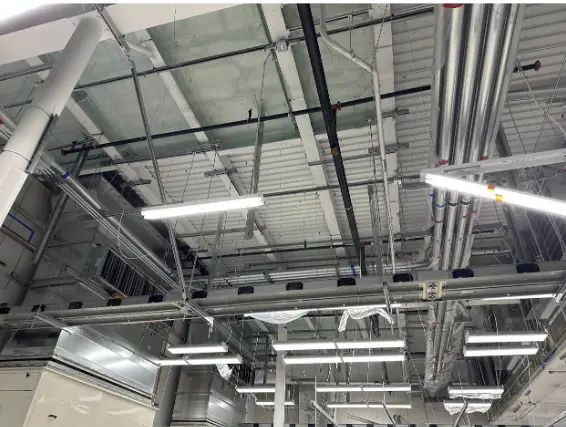
Why Choose USA Spray Me for Your Cold Room Insulation Project
USA Spray Me provides top-tier insulation services, ensuring your cold room and home are insulated for maximum efficiency and performance. Our skilled technicians specialize in spray foam application - using high-quality materials to enhance energy efficiency and comfort. With extensive experience in various insulation types, including eco-friendly blown-in insulation, soundproofing, fiberglass insulation, and spray polyurethane foam roofing, we ensure long-lasting results designed to meet your specific needs.
Frequently Asked Questions (FAQ)
Here you'll find answers to the questions we get asked by our clients.
For cold rooms in California, the best insulation type is spray foam. It provides superior air sealing and energy efficiency performance, which are crucial for maintaining a consistent temperature. While it comes at a higher cost, the investment pays off in the long run with lower energy bills and enhanced insulation. Spray foam is optimal for ensuring your cold room remains well-insulated and efficient.
The lifespan of insulation varies depending on the type and installation quality. Spray foam insulation can last 20-30 years, while fiberglass and rigid foam can last 15-20 years. Regular maintenance and inspections can extend the lifespan of your insulation.
While some types of insulation, like fiberglass batts, can be installed by homeowners, others, like spray foam, require professional installation. Hiring a professional ensures proper installation and maximizes the insulation's effectiveness.
Regular inspections are essential to ensure your insulation remains effective. Check for signs of damage, moisture, or compression and address any issues promptly. For spray foam insulation, ensure proper ventilation to avoid moisture buildup.
Choosing USA Spray Me ensures you receive specialized services - including spray foam insulation, closed-cell insulation, fiberglass insulation, blown-in insulation, and soundproofing insulation. We also offer insulation removal, concrete leveling, and polyurea coating. Our San Francisco-based team has over ten years of experience and uses materials from top suppliers and proven technologies to deliver high-quality, efficient solutions. We are committed to customer satisfaction, providing services that enhance energy efficiency, comfort, and environmental responsibility.

